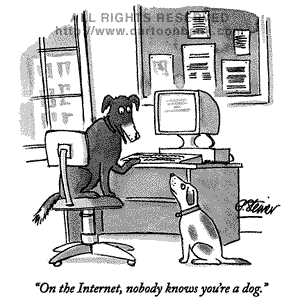Toyota Recall – Canadian bloggers need not post?
 I think by now we’ve all heard that Toyota has had a serious consumer safety problem with accelerator pedals. The pedals would become stuck while driving, and caused the deaths of 12 people. Toyota’s initial response was “just throw out the floor mats.”
I think by now we’ve all heard that Toyota has had a serious consumer safety problem with accelerator pedals. The pedals would become stuck while driving, and caused the deaths of 12 people. Toyota’s initial response was “just throw out the floor mats.”
Needless to say this did not sit well with anyone….the media, consumers, and above all the blogging community. After a public relations nightmare, the company agreed to recall 4 million vehicles in the United States. If you go to the web site, you’ll see a link about the Floor Mat Campaign (still no mention of the word “recall” on the home page!).
On top of all of this, it seems that Toyota forgot to notify Canadian vehicle owners about the recall. On November 19th a Canadian blogger commented that although a detailed letter was sent to 4 million US vehicle owners, nothing was been communicated to Canadians. Although car sales have slumped across North America, Canada’s CBC news predicts that sales of Toyota products in Canada will approach 200,000 for 2009. Still a pretty large number to risk injury or worse.
According to a statement by Toyota Canada,
“There is no risk of accelerator-pedal entrapment when compatible Toyota and Lexus Canadian-designed, all-weather floor mats are properly used in the affected models as they are different in design and material composition from the Toyota-supplied mats in the U.S.”
However, after even more bad online coverage by both the media and the blogging community, Toyota did a complete 360 on its position of Canadian vehicles. On November 27th, Toyota announced that the company will extend the recall to Canadaian consumers to fix accelerator pedals for 209,000 vehicles in the country.
What went wrong? Toyota’s failure to track online statements about the company caused a crisis situation to get worse. Blogs are not limited by geography. By missing the conversation, Toyota has seriously hurt its brand in the eyes of consumers across cyberspace.
What went right? As blogs are open to the world, they create an open conversation about critical issues. With pressure from a diverse mix of publics including consumer groups, the media, government, and bloggers, companies can be pressured to do the right thing.
Keeping it legal: Microsoft teaches kids about downloads
August 2009 – A Boston University graduate student is ordered to pay $675,000 to four music companies for illegally downloading and distributing about two dozen songs (US News & World Report)
July 2009 – a federal jury Thursday found a 32-year-old Minnesota woman guilty of illegally downloading music from the Internet and fined her a total of $1.9 million (CNN.com)
With these staggering courtroom verdicts, there has been a growning recognition that intellectual property laws should be taught to young people at an earlier age.
 In 2008, Microsoft released a survey report that found that 49% of kids between 7th and 10th grade didn’t know the rules for downloading legally v. illegally from the internet. Of the other half that was familiar with the problem of illegal downloading, the vast majority (82%) reported that those who downloaded content illegally should be punished. That’s significantly higher than the 57% of teenagers unfamiliar with the law who felt punishment was in order for illegal downloads.
In 2008, Microsoft released a survey report that found that 49% of kids between 7th and 10th grade didn’t know the rules for downloading legally v. illegally from the internet. Of the other half that was familiar with the problem of illegal downloading, the vast majority (82%) reported that those who downloaded content illegally should be punished. That’s significantly higher than the 57% of teenagers unfamiliar with the law who felt punishment was in order for illegal downloads.
Microsoft MyBytes – Intellectual Property Awareness Web
To increase awareness, Microsoft created a website with the goal of teaching kids about the importance of intellectual property. Known as MyBytes, the brightly designed site features quotes about the importance of intellectual property with polls, video clips with interviews of teens along “real life” examples on how theft of intellectual property can impact a kid.
There’s a section where kids can make their “own” music sample they can mix, publish and share. At lastest count, about 1,300 samples are available. A large number, but not overwheling considering the site was launched nearly two years ago by one of the world’s largest companies.
On MyBytes, testimonials are available from five “celebrities” explaining the importance of Intellectual Property:
- Damon Lindelof – Writer and Executive, ABC’s Lost
- Jeff Fraley Producer, Trinity Films
- Lil’ Mo -R&B Singer/Songwriter
- Herb Jackson -Abstract Painter
- Craig Nova – Novelist
I am not questioning the talent of any of these people. However, as they are not household names, I am not sure how relatable they are to kids. Also, photos of Painter Herb Jackson and Novelist Craig Nova look like they are at least 50 years old. Not exactly the type of person you’d expect a teen to listen to. Add a PSA message from celebrities like Beyonce or the Jonas Brothers? You’d probably have something there Microsoft.
This site is well intended, but it does not seem to be getting the traffic or return on investment for Microsoft. By my investigation, I do not see and social media sites being used in conjunction with the MyBytes site. With nearly 88% of American teens on social media, Microsoft’s use of a web-only platform without accompanying social media makes the IP awareness campaign fall flat. Surprising again, when you consifer the risks involved that Microsoft hasn’t more aggressively pushed this website, perhas as a PR move with another organization in the recording or motion picture industry.
However, all is not lost. Research is telling us that more teenagers (up to 65%) are streaming music regularly, with more 14 to 18 year olds (31%) listening to streamed music on their computer every day compared with music fans overall (18%).
As technnology changes, kids may be the best authorities on prevention of illegal downloads of copyrighted music, graphics, movies and software. For their sake, let’s hope there aren’t any more million dollor courtroom verdicts.
Bacardi and Michael Shumacher prove that drinking and driving don’t mix
 If you’re reading my post, that means you have survived another Christmas. For that you should be congratulated! If you still have holiday fever, no worries! New Year’s Eve is just around the corner.
If you’re reading my post, that means you have survived another Christmas. For that you should be congratulated! If you still have holiday fever, no worries! New Year’s Eve is just around the corner.
In keeping with the season, what better time to review a short film covering the dangers of drinking and driving? Bacardi has created a film to demonstrate the dangers of drunk driving, but not in the way you would expect.
Here, bartender Salvatore Calabrese, is asked to mix a cocktail. He’s dressed in a crisp, white shirt, but more on that later. The drink is not going to be mixed in the way you might think. The catch? Mr. Calabrese needs to mix the drink while in a sportscar being driven by 7-time Formula 1 Racing Champion, Michael Shumacher.
As Shumaker maneuvers every turn (thankfully on a closed course!), our hapless bartender is getting a shower of mixed drinks on his lap as he prepares to mix a cocktail. He begs the driver to “keep it steady, keep it steady.”
Finally, the ride ends, and Calabrese’s once-white shirt is now a blush pink thanks to the ride. He serves a drink to Shumacher, who reminds the viewer, “Proof that Drinking and Driving Definitely don’t mix.”
This film was created in the UK, and my best guess is that this “tongue in cheek” approach to suh a serious subject would never fly in the USA. In fact, if you visit the website referenced in the film, www.championsdrinkresponsibly.com, the site tells customers that the site is “not intended for visitors from the US and Canada. If you are entering from these countries please visit bacardilimited.com.”
Fortunately the fatalities in America have dropped significantly. According to Alcohol Report.com. 26,173 fatalities were reported in 1982. Fast forward to 2009 and the number has been cut nearly in half to 13,846. Yet still, one fataility is one too many, and a good PSA can only help reinforce the mission against drunk driving.
Nonetheless, this is a creative method to talk about a serious subject. And if two buddies in a pub can talk about the ad as racing fans and relate to it, all the better.
Be safe and well this holiday season!
Teens and Facebook: Permission to stay connected or risk to employers?
Today’s teenagers were born into an era in which they never knew a world without TiVo, internet or chat rooms. Whether at school, work or band camp, kids are social in person, and they take their expectations on remaining plugged in wherever they go. Will their habits succeed in the workplace, or crash and burn?
This month Junior Achievement and accounting firm Deloitte released a survey report about teenagers and their expectations about social networking habits on the job.
In our mobile society this probably would not come as much of a surprise to anyone:
The report found that 88 percent teens surveyed use social networks every day, with 70 percent saying they participate in social networking an hour or more daily.
More telling however, was that half (58 percent) said they would consider their ability to access social networks at work when considering a job offer from a potential employer.
 Although the majority of teens surveyed stated they do not behave unethically while using social networks (83 percent), the report found conflicting information. Read on for some statistics:
Although the majority of teens surveyed stated they do not behave unethically while using social networks (83 percent), the report found conflicting information. Read on for some statistics:
- 40 % do not consider the potential reactions of college admissions officers
- 38 % do not consider the reactions of present or future employers
- 30 % do not consider their parents’ reactions.
- 16 % readily admitted to behavior that included posting content embarrassing to others, spreading rumors and pretending to be someone other than themselves, with a vast majority of them expressing regret later about doing so.
These figures provide some soboring statistics for employers. A lack of mindfulness can hurt a friendship, and yes, that can be costly to the individuals involved. But what if you’re a business owner? The implications of an employee’s post can put the costs (both financial and reputation) to a company beyond repair. The cost from bad pr, lost sales or even a lawsuit due to an employee’s action spreading rumors about co-workers or managers and leaking proprietary information can be overwhelming.
As the job force of the future puts such an emphasis on social media, additional training and education is required. As employers may be less familiar with social media tools than their young hires, they will need to consider enhanced training and communication relative to social networking in order to recruit the best and brightest. However, teens entering the workforce may also need to learn some lessons about ethical decision-making tools to help them understand the importance of behaving with integrity on- and offline. After all, once something is posted, it can live on forever.
Currently more than half of the companies surveyed by the Society of Corporate Compliance and Ethics do not have a social medial policy. Employers need to recognize that policies should be created sooner than later to avoid risk. I am a legal marketer by trade, and love the e-blasts sent by Jaffe Associates. I’ve provided a link for their published Social Media policy. This is a good sample, regardless of industry. But definitely work with your HR and legal department to make sure this is right for your company.
A little leg work now, and employers and recruits can interact with each other safely and effectively.
Kids & Mobile Technology: Parental Controls Required
Young people are seemingly born with a knowledge of how to text via cell phone and navigate the internet. They are comfortable using new technology and are fascinated by the information and imagery that can be obtained at their finger tops. In many cases, youngsters are more comfortable with these tools, offering a real challenge for parents to provide guidance.
In today’s modern society, our world revolves around a mobile device, and that age group is becoming younger and younger. A report by C&R Research, found some staggering statistics:
- 22 percent of children ages 6-9 own a cell phone
- 60 percent of tweens (ages 10-14) own a cell phone
- 84 percent of teens (ages 15-18) own a cell phone
- The report found that by 2011, 54 percent of 8 to12 year olds will have cell phones.
This month, the Federal Trade Commission released a report that indicated that although producers of violent music, movies, and video games have made some strides in blocking the access of these items to children, more needs to be done.
The report found that the music industry has blocked actions to implement rules restricting the marketing of explicit-content labeled music to children. Although music retailers and online sites were found to be consistent in displaying a parental advisory label, retailers only prevented 30% of children from buying explicit-content music. Movie theaters fared somewhat better, with a 72% turnaway rate for underage kids to R-Rated movies. However, retailers failed to enforce rules against underage purchase of R-rated and unrated DVDs.
And now the bright side. The FTC found a the highest degree of compliance with the video game industry’s marketing and advertising rules, blocking the sale of M-rated games to children, with an average denial rate of 80 percent. Granted this does not preclude Mom, Dad or a favorite uncle from purchasing the content, but it does allow an extra layer of protection against kids.
The FTC offerered a side of caution against kids and mobile technology. The growth of applications for cell phones, combined with the lack of ratings system for mobile apps is a cause for concern. A search of “free mobile games” on Google brings up countless responses on free downloads, with available titles ranging from the harmless to the adult. Although many sites have family filters in place, smart kids can easily turn this off without mom or dad’s knowledge.
So, what is a parent to do?
Although filters, V-Chips and parental controls help, they may not be the answer, as most kids will find a way to bypass such tools. As many games are free, and riddled with advertisements, parents can also make their opposition of violent games clear by online protest, or with their pocketbooks by not spending money on advertised products. Believe it or not, research still shows that kids really do pay attention to what their parents say. It’s certainly not easy, but in-person communication with your kids about may still be the best form of “social media” after all.
A Twitter Convert: Thanks to Keanu Reeves
I signed up for our new media class with a little bit of apprehension. Yes, I had a Facebook account, which I used with close friends and coworkers. And, of course, LinkedIn was a great tool I have used for years to connect with contacts on a professional level.
Create a blog? Never!
Twitter? Hm.
Honestly, I really wasn’t sure what to do with a thing called Twitter. Very, very few friends of mine Tweet, ditto for professionals in my circle. Although I work in marketing, it is in the professional services industry (legal). By its very nature, law firm marketing leans toward conservative measures. There are issues and concerns over adopting new media, as there are many industry-imposed ethics standards on how attorneys or firms can outreach to prospective clients, most of which vary from state to state. In many cases, the rules governing law firm marketing simply need to catch up with the trends in social media.
As a result, poor Twitter didn’t garner much of my interest or attention.
However, this month I was fortunate to be blessed by divine Twitter intervention to expand my experience.
Living in Buffalo, NY, life is great, but rather routine. It’s an older “rust belt” industrial city, and sadly, most of the industry has dried up. Other than snow, not a lot of excitement happens here. However, this November and December, it was announced that parts of a new movie would be filmed here. “Henry’s Crime“, starring Keanu Reeves (famous for films such as “Speed” and “The Matrix” series) was to be filmed downtown, directly outside my office building! Filming took place this week December 16 and 17th. On a whim, on Friday, December 11th, I posted this “tweet“:
Keanu Reeves films in Buffalo next week, directly outside my office. Stay tuned for updates.
Little did I know that I had opened up a Twitter flood gate with a simple post. Contacts started following me from across the globe. Links were shared, all kinds of links. YouTube videos, photos on TwitPics or Flickr and news clips, just to name a few. I was really surprised to see firsthand how a group of users could simultaneously engage in conversations all at the same time. What an amazing way to link ideas, break stories or find information about topics you might not think about from someone you would never otherwise meet. From conversation with fans of Keanu Reeves, I also received a lead on a product I was researching for business purposes. To me, most interesting of all was the fact that my Flickr site gained nearly 1,400 viewings within days. Amazing.
Although the obstacles in my own industry still exist, and there is a “slight” chance that attorneys may not get the same level of fan following as an international celebrity, there is a lesson here. Twitter may be one of the ultimate connection tool for rapid, real-time discussion. Through an active dialogue, contacts can share information between them selves. As a marketer, it is only logicical to get on board, and become engaged.
Thanks to Keanu, I have learned that the possibilities of Twitter are endless. If only I could thank him in person.
New Media: beating cyberbullies at their own game
With advances in technology, individuals can use it for good or for evil. An unfortunate result of online communication is cyberbullying.
Today CNN is featuring a success story in which a bulled teen was able to turn the tables by using new media aganst her attackers. A video of a student being filmed was posted on Social Media sites YouTube and CNN ireport. The video received many views, including one by a local reporter, who notified the authorities. A clip to the video can be viewed here.
Cyberbullying is a term that can relate to many things: A chat room discussion. Fake profiles on a social networking site. Unflattering video or image posts. Hurtful instant messages. These are all ways to harass, ridicule, embarrass or threaten another person.
The problem is that what used to happen on school grounds has spread to the masses. Cyberbullies can enroll other students to join in that may normally not be an active participant on school grounds. The end result that unseen people who wouldn’t normally bully don’t take it as seriously because there is an sense of anonymity behind a keyboard or mobile device. As we’ve seen in recent headlines, the end result of Cyberbulling can be deadly.
A national law enforcement survey released some alarming statistics. Their poll of children and teens found that one in three teens and one in six preteens have been victims of cyber bullying. Estimates show that more than 13 million children aged 6 to 17 were victims of cyber bullying. Read more for some additional alarming statistics:
— One-third of all teens (12-17) and one-sixth of children ages 6-11 have had mean, threatening or embarrassing things said about them online.
— 10 percent of the teens and four percent of the younger children were threatened online with physical harm.
Most alarming statistic? More than 2 million of those victims did not report the cyberbullying.
Through social media, the victim was able to use the same tools in order to report the problem. Well done.





